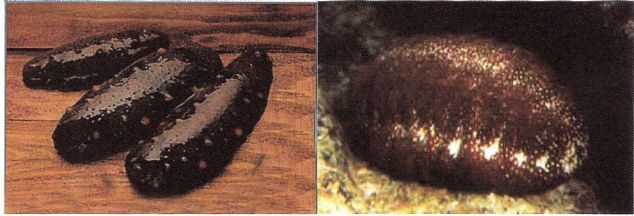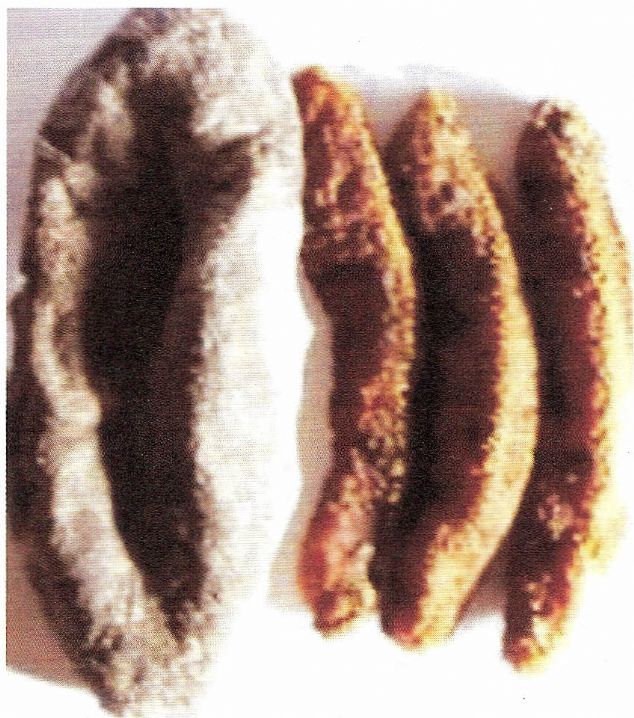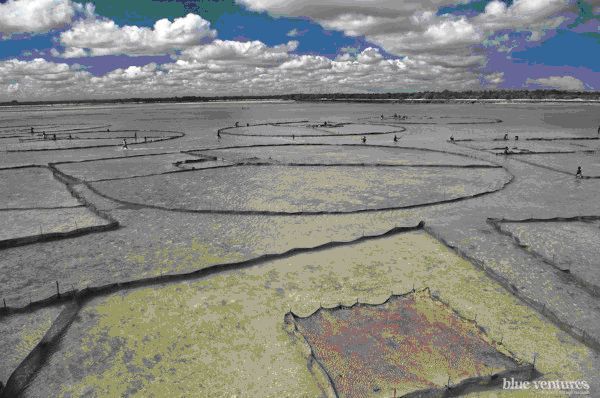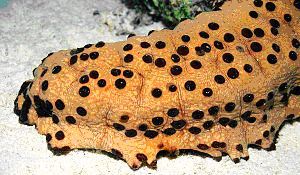
|
 |
Kitaplar » AQUACULTURE » Sea Cucumber Cultivation Farming SEA CUCUMBER CULTIVATIONRecently, there have been many applications such as "Can we grow sea cucumber in our country?" I wrote the following notes maybe 20 years ago. I suspect these notes may give you some basic information. I would love to keep this information updated. Maybe I could do that. But it requires me to edit my book "FISHERIES CULTIVATION" published on my website from scratch. I do not update as I cannot have much opportunity for this. Most of the information presented here is basic information and will not change. Of course, there have been very important developments in every subject in the last 20 years. I see these important developments in every aspect of breeding and I am very happy. You can get some basic knowledge by reading some of the topics in this book. I believe that there will be those who make a breeding decision by making use of these articles. They will try to establish facilities that include the latest technologies by researching the latest technology techniques. The Sea Cucumber issue is the same. When the internet is examined, there is a lot of information about the applications in the world on this subject. My general suggestions for those who say "Should we do this kind of work?" Are as follows: The subject of sea cucumber cultivation is a new issue for our country. As lecturers, we can offer some basic information. However, since there is no exemplary study in our country, it is useful to be careful to begin with. If possible, businesses in foreign countries can be visited or an examination can be made in an organization that does this work abroad. There are important practices in this regard in Vietnam, China and the Far East. I believe that the issue of puppy production will not be a big problem. Sea fish juvenile production facilities, which are successfully implemented in our country, can be an example in this regard. There are special applications belonging to that species in the production of each type. Success can be achieved by knowing the differences in this matter, and applying general upbringing principles.
In our country, there may be some problems in bringing the produced puppies to marketable size, as well as the breeding. I believe that detailed studies are needed on this subject. In summary, it would not be right to make an attempt without making a basic examination. INTRODUCTION Sea cucumbers are a common creature in all world seas. It is not used for food or any other purpose in our country. It is used as fishing bait only in some regions, but its use is not very common. Sea cucumbers are an important seafood product used in Chinese medicine in China. They belong to the Holothuridae and Stichopodidae family. Stichopus japonicus is the most commercially important species in the sea cucumber group. In addition, Holothuria scabra is another important species. Both species are important in terms of aquaculture. While the annual production was 130-140 tons in the 1970s, the production from natural resources decreased to 40 tons in 1980. In the meantime, export works were carried out by collecting them from our country. As a result of the increasing market demand, importance has been given to breeding activities and positive results have been achieved. Successful implementations are made especially in North China. Both types are found in cold seas. There are around 15 types of sea eggplant in our country. There is no study on which of these species is suitable for breeding and it will be beneficial to carry out studies in our country's universities on this subject.
 After the sea cucumber is dried, it is marketed as food.
CULTIVATION TECHNIQUE It is very difficult to distinguish between males and females with the naked eye. The sexual organ is quite small. The same organ also serves as a discharge. An elderly individual is around 250 gr. A female individual can yield 1-2 million eggs. It is recorded that some individuals can give up to 10 million eggs. Egg production is also related to body weight. There are around 220-290 eggs in a gram of egg. The individuals to be used as breeders are collected when the water temperature is around 15-17 degrees. Artificial production can be summarized as follows. Breeding individuals collected are taken into tanks at a rate of 30 individuals per m3. The amount of oxygen must be higher than 5 mg. Daily feeding is done by giving the meat of other seafood between 5-10% by weight. Ovulation is done by heat shock. For this purpose, the water temperature is raised 5 degrees above normal within 10-15 minutes. A current is created in the tank by giving the heated water powerfully. After this procedure, it is observed that individuals lay eggs. The diameter of the eggs is around 120-130 microns. They are taken into tanks with 1 million eggs per m3. It is observed that the larvae that hatch develop in periods. Phytoplankton are used to feed the larvae. The planktons used in this subject are Dunaliella salina, Phaeodactylum tricornutum and Chaetoceros simplex. In addition, yeast can be used. The period in which the larvae are present is effective on feed intake. Initially, 10.000 cell / ml larvae are increased to 25.000 cell / ml as they grow. Daily phytoplankton supplementation is increased to 4 times a day instead of 2 times a day. The quantity and quality of phytoplankton are significantly influenced by the quality of the larvae.
The sea cucumber drying process When the larvae reach the doliolaria and pentactula stage, their body shape begins to change. Two days later they become young individuals. During this period, their body length is around 400 microns. When they are young, they are stocked as 20-50 individuals per 100 cm3. There are several purposes in growing sea cucumbers.
The first of these is to enrich the region by leaving it to natural breeding areas. It is to create new stocks in areas where they are not available and considered appropriate. The other aim is to make production by ensuring their development in controlled areas.
Simple breeding techniques have been applied in China. Stones where sea cucumbers can be protected have been thrown in these areas and it has been tried to create habitats. In addition, water conditions, currents, the condition of the eating creatures, the feed condition and the development of the sea algae were taken into consideration in the selection of the growing areas. It has been observed that place selection is the most important issue for success in breeding. In addition, routine work should not be interrupted. As described, it was noted that the yield increased sixteen times in a region where the trial was conducted. Sea cucumber production is one of the studies applied in the Far East by creating a controlled environment on the sea bottom. It is suggested to create several small areas on the sea bottom instead of large ones. 3-4 stocking per m2 is recommended. They can be fed with leftovers. After the sea cucumber is collected, the inside is cleaned, cooked with sea water until it acquires a rubbery consistency, and marketed after drying. There is no habit of eating this seafood in our country. It will not be difficult to market the product, which has been well processed, to the far east countries. Efficient results can be obtained in regional studies by renting a region from the state only for the purpose of growing sea cucumbers and by not preventing normal navigation and angling in these areas. Efficient areas can be obtained with such planning especially in the regions where they are naturally located. The existence of companies that collect and export sea cucumber in our country supports the idea that these issues can be addressed in the future. It will be beneficial to carry out preliminary studies on its production.
 Sea cucumber cultivation areas in Madagascar. In the area with a depth of 1-2 m, each grower has defined areas. Development is much better in forage breeding.

EXTRA: (July 2015) Sea cucumbers are generally found on the sea bottom and are fed by eating organic matter that is in the decay stage. The consumption rate is high in China and when the natural resources decreased, aquaculture studies started. I have a lot of demands on sea cucumber cultivation, but it is troublesome to give enough wisdom as there is no example and practice in our country. Because there is the possibility of encountering many difficulties in a new subject. In the fronts, some basic information about offspring production is presented. First of all, it is necessary to build a facility for offspring production. In this regard, the breeding methods applied in sea bream and sea bass production facilities in our country can be applied similarly. However, there will be some application differences specific to the species. In order to be successful in this regard, some applications abroad should be reviewed. There are successful hatcheries for the "Apostichopus Japonicus" breed, which is cultivated in Japan and China. Examination of such hatcheries can also be a guide. In India, the "Holothuria Scabra" species was also successfully produced by human hand in 1988. Following this study, offspring production was carried out in New Caledonia, Maldives, Solomon Islands and Vietnam by applying the techniques applied in India. NOTE: The following links may be useful on sea cucumber cultivation |




